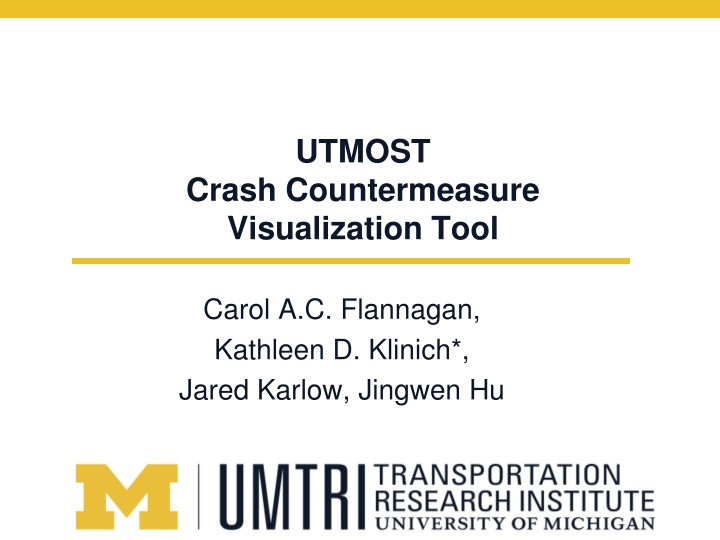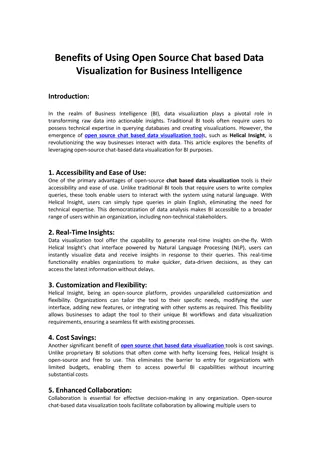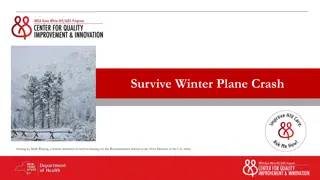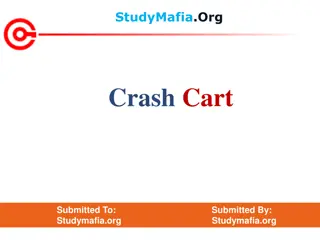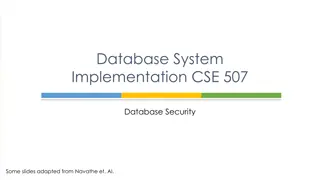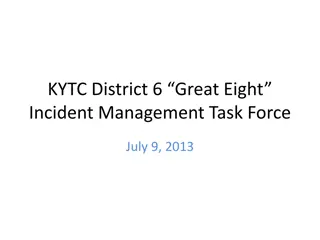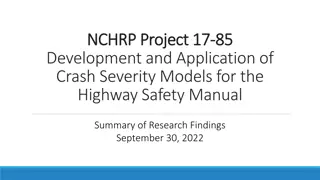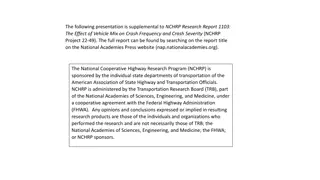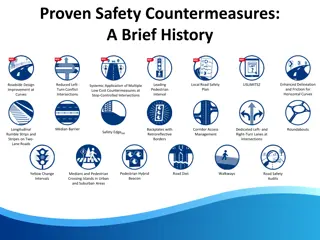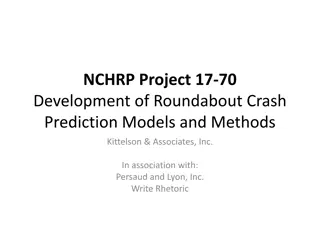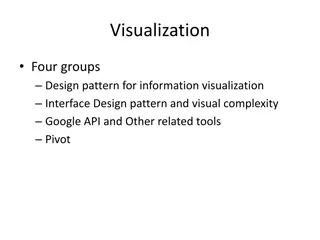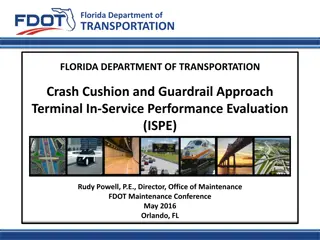Advanced Safety Visualization Tool for Crash Countermeasures
UTMOST is a sophisticated tool designed for visualizing safety countermeasures and their impact on crash populations. It allows evaluation of various safety scenarios, exploring the potential benefits of advanced technologies and safety laws in reducing fatalities and injuries on the road. Through data analysis and simulation, UTMOST enables users to understand the effectiveness of different safety interventions and make informed decisions for enhancing road safety.
Download Presentation

Please find below an Image/Link to download the presentation.
The content on the website is provided AS IS for your information and personal use only. It may not be sold, licensed, or shared on other websites without obtaining consent from the author.If you encounter any issues during the download, it is possible that the publisher has removed the file from their server.
You are allowed to download the files provided on this website for personal or commercial use, subject to the condition that they are used lawfully. All files are the property of their respective owners.
The content on the website is provided AS IS for your information and personal use only. It may not be sold, licensed, or shared on other websites without obtaining consent from the author.
E N D
Presentation Transcript
UTMOST Crash Countermeasure Visualization Tool Carol A.C. Flannagan, Kathleen D. Klinich*, Jared Karlow, Jingwen Hu
UTMOST Unified Theory for Mapping Opportunities in Safety Technology Allow visualization of the benefits of multiple safety countermeasures Understand how combinations of those countermeasures might influence the crash population UTMOST.UMTRI.UMICH.EDU
Using UTMOST Start with current distributions of crashes and injuries; Road to Zero project added fatalities Explore what could happen if Vehicles had advanced crash avoidance technologies Everyone wore their seatbelts All states had strong traffic safety laws Evaluate tradeoffs between safety benefits and implementation costs
Datasets Distribution of people in crashes generated from 2013-2015 National Automotive Sampling System General Estimates System (NASS-GES) Distribution of crashes by severity estimated for each combination of crash variables using NASS- GES Injury risk curves modeled using the 2010-2015 National Automotive Sampling System Crashworthiness Data System (NASS-CDS) dataset Fatality risk and delta v distribution based NASS- CDS and corrected based on 2011-2016 FARS
Doing the math 100% Risk of AIS3+ injury 80% Injury/fatality risk Exposure: distribution of crashes by crash severity Multiply together for injury distribution Integrate for counts 60% 40% 20% 0% 0 20 40 60 80 100 7% Current near-side Add crash avoidance options 6% Risk of near-side crash 5% 4% 3% 2% 1% 0% 0 20 40 60 80 100 2500 injuries in near-side crashes Near-side current Annual number of AIS3+ 2000 Add crash avoidance options 1500 1000 500 0 0 20 40 60 80 100 Crash severity delta V (km/hr)
Configuring crash world Outcomes People in crashes People injured in crashes People killed in crashes Configured by crash type crash direction vehicle type person age driver age Sex alcohol involvement light condition
Crash type: Fatal vs. All Xpaths@signal Xpaths@non-signal vehicle failure Turning/same direction Run light/stop Road departure Rear end Pedestrian Crash event Parking other Opp direction Object Non-collision Drifting Cyclist Ctl loss Changing lanes Backing Avoidance Animal 0 5 10 15 20 25 30 35 Percentage of crashes Fatal All
Fatal crashes: all current CA technologies in all vehicles N: 33,292 ->22,232: 33% reduction (Top 5: ESC, Lane Keeping Assistance, Lane Centering, AEB, FCW)
Fatal crashes: no alcohol crashes N: 33,292 ->24,489: 26% reduction
Fatal crashes: 100% Proper Restraint N: 33,292 ->24,216: 27% reduction
Fatal crashes: all three countermeasures N=33,292 ->12,943: 61% reduction
Overview UTMOST.UMTRI.UMICH.EDU Online tool to explore effects of countermeasures on motor- vehicle crashes, injuries, and fatalities Continuing Road to Zero project will add options to view by race/ethnicity and income level
Thank you for your attention. Contact: Carol Flannagan cacf@umich.edu or Kathy Klinich kklinich@umich.edu
Crash variables Overall crash direction (front, near-side, far-side, rear, rollover, pedestrian, pedalcyclist, motorcyclist, and other) Crash type or mechanism (run-off-road, backing, etc.) Occupant age group: (0-1,2-4,5-7,8-10,11-13,14-15,16-17,16- 20,21-65,66+) Occupant gender (Male, Female) Driver age group (<16,16-17,18-20,21-25,25-65,66+) Driver gender (Male, Female) Driver alcohol involvement (Yes, No) Light condition (light [includes dusk and dawn], dark, dark but lighted, other/unknown) Pedestrian alcohol involvement (Yes, No for pedestrians only) Vehicle type (Passenger car, SUV, Van, Pickup, Pedalcyclist, Motorcyclist, Pedestrian, Other)
Injury risk: restraint effect Age 14+ in vehicles: effect of belt use estimated from NASS-CDS Motorcyclists: helmet effectiveness estimated from NASS-GES Children: restraint effectiveness estimates from NASS-GES for age groups 0-1, 2-4, 5-10, 11-13
Injury/fatality risk variables for planar crashes Impact direction (frontal, nearside, farside, rear) delta V (expressed as ln [delta V]) Occupant age and gender Belt restraint (yes/no) Vehicle type (passenger car vs. other) Alcohol involvement
Injury/Fatality risk for other crashes Rollover: occupant age and belt use Pedestrian/cyclist: Pedestrian/cyclist age Light level Striking vehicle type Pedestrian/cyclist alcohol use Motorcycle Age Light level Alcohol use
CA Technology and Relevant Crash Types Crash Avoidance technology Lane departure warning Adaptive cruise control Alcohol interlock Electronic Stability Control Frontal collision warning Intelligent lighting systems Lane change warning Lane keeping assistance Relevant Crash Types Head-on (from lane drift); Run-off-road Rear-end crashes Alcohol involved Single-vehicle run-off-road crashes rollovers Rear-end crashes, object crashes Pedestrian/cyclist low-visibility crashes Drifting and lane change crashes Head-on collisions from lane drift, sideswipe crashes, run-off-road crashes Pedestrian crashes Backing crashes Run-off-road crashes Pedestrian detection system Reverse collision warning system Road departure warning
